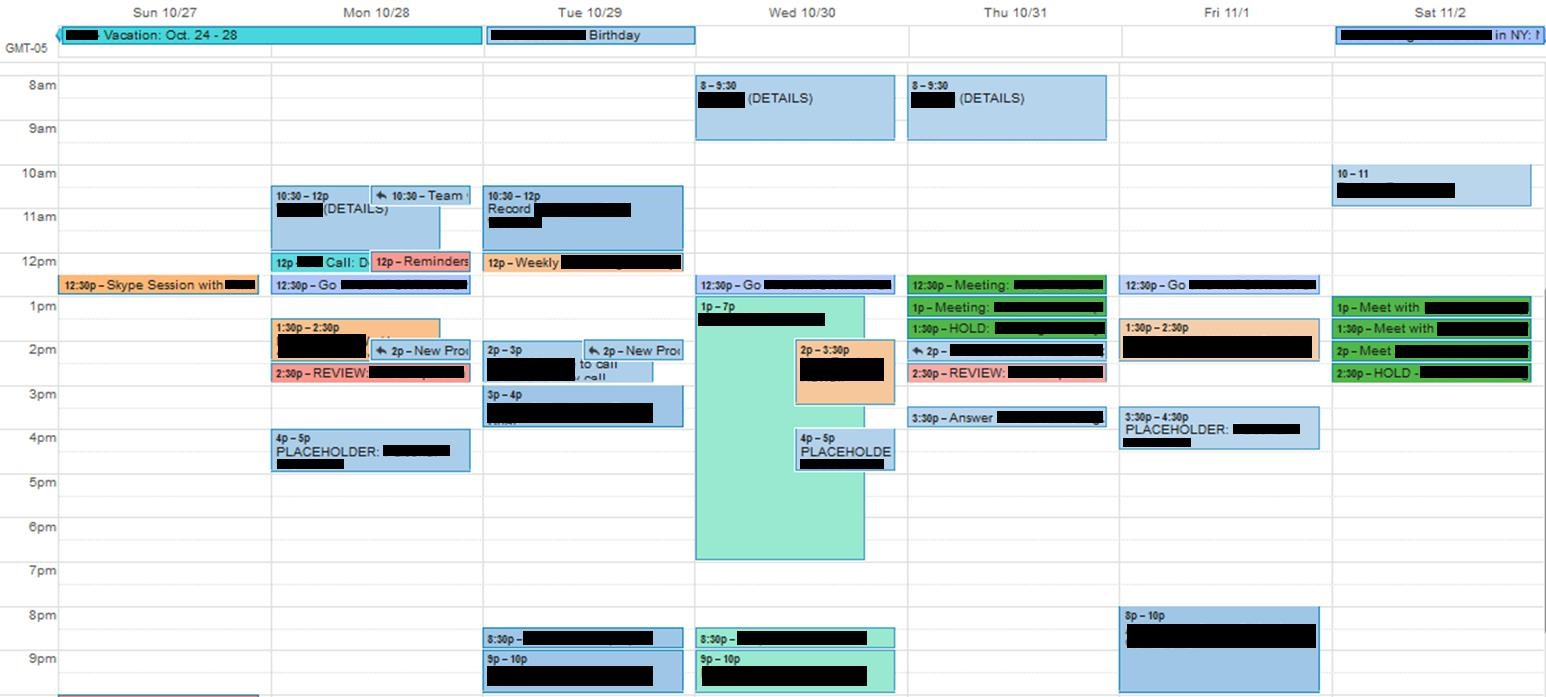
Make $100K+ in 1 Year Through Freelance Digital Marketing
Freelance marketing is a perfect way to earn extra money, flex your creative skills, and make valuable connections and networks.
The best part: Companies are in constant need of great freelance marketers.
Some fast facts:
- 9 in 10 companies leverage social media for marketing purposes
- Businesses’ reliance on SEO and content creation continues to rise each year
- 89% of marketing teams rely on email marketing for lead generation
And somebody has to help fill all those roles. That’s where YOU come in.
6 Steps for Becoming a Successful Freelance Marketer
- Step #1: Find your niche
- Step #2: Find clients where they live
- Step #3: Set your rates
- Step #4: Meeting deadlines
- Step #5: Get referrals
- Step #6: Treat yourself like a business
If you’re a beginner, you probably don’t know how to start.
That’s why we talked to actual professional freelance marketers to get their best tips to help you dive into freelance marketing.
But first, you need to understand what freelance marketing is.
Freelance marketers help companies and businesses promote their brands.
Your job is to help:
- Grab attention
- Drive potential clients to a website/business
- Convince them to buy a product
And most EVERY business needs marketing help in one shape or another — especially new ones. Think about it: The busy founder of a new tech start-up isn’t going to want to focus on writing great sales letters or coming up with tweets.
That’s where YOU come in, and we want to help you get started.
Freelance marketing step #1: Find your niche
Marketing offers a lot of roles — and the direction you take depends on your skills, talents, and interests.
Here are just a few potential freelance marketing roles you could own:
- Copywriting. Writing the text needed for marketing products/services including sales pages, email campaigns, and landing pages. If you’re trying to sell something, you’re probably writing copy.
- Content writing. Writing and crafting content for blog posts, articles, white papers, videos, and podcasts. Content writing typically emphasizes informing or teaching people rather than selling them something (that usually comes later).
- Social media / community management. This covers posting and promoting a company’s brand and content on social media like Twitter, Facebook, Instagram, Pinterest.
- Search engine optimization (SEO). This is the process of getting a business’s web content to show up in the results of search engines. It’s very important if you want to drive traffic to your site through Google.
And while it can be tempting to say, “I’M GOOD AT EVERYTHING. PLZ HIRE ME” those people don’t get hired. It’s best if you niche down your role and decide on a specialization.
Why? The more specific you are, the better you can market yourself.
For example, which fitness book do you think will do better?
- The book telling everyone that working out will make you feel better
- The book for millennial women looking to get six-pack abs
That’s a pretty simple example but the truth is there: The more specialized your offers are, the more actual buyers and clients you’ll attract.
If you’re reading this and don’t have any idea which freelance marketing role you want to own yet, don’t worry!
Freelance Marketing Ideas
Here are three questions we’ve developed to help you come up with a profitable idea:
- What skills do you have? These are the things that you are really good at that could translate into freelance marketing. Example: Do you have a great eye for analytics and trends? SEO management might be for you.
- What do your friends say you’re great at? What others say you’re good at can give you insights on talents you didn’t even know you had. Example: Your friends are always telling you how much they love your stories. Maybe content or copywriting is in your future.
- What do you do on a Saturday morning? What do you do on a Saturday morning before everyone else is awake? This can be incredibly revealing to what you’re passionate about and what you like to spend your time on. Examples: Are you a social media hound firing off clever tweets and posting awesome photos on Instagram? Companies would pay you for those skills.
You can also check out our 15-minute video all about a great system to help you find a money-making hustle: Idea Mapping.
Think about who exactly will be using your services:
- How old are they?
- Where do they live?
- What are their interests?
- How much do they make?
- What books do they read?
Once you have the answer to those questions, you can come up with your niched-down role.
Here are a few examples:
- The copywriter for mid-sized veterinary clinics
- The SEO specialist for tech start-ups <5 years old
- The social media manager for upscale French restaurants
- The content writer for personal finance and development gurus
(Hmm that last one seems familiar…)
And don’t worry. If you try something out and don’t find it’s a good fit for you, you can always change your roles. That’s the beauty of freelancing.
Once you’ve found your niche, though, you’re ready to get started finding clients.
Want to build a business that enables you to live YOUR Rich Life? Get my FREE guide on finding your first profitable idea.
Freelance marketing step #2: Find clients where they live
If you’re a beginner, finding clients can seem like an intimidating endeavor. After all, you’re selling yourself and your passions, which can be an incredibly vulnerable process.
However, the process can be rendered much less intimidating if you remember one thing: Start simple. Find smaller businesses and clients who are more willing to work with a beginner freelance marketer.
Luckily, there are a number of sites that businesses turn to in order to find freelance marketing talent.
Chief among them: Upwork, a job and gig site catered toward freelancers.
“In the beginning [of my career], I relied heavily on freelance websites such as Upwork,” says freelance marketer Kirsty Price. “I’d highly recommend Upwork for those just starting out in their freelance careers too.”
And getting started with the website is simple. You simply create a freelancer profile and start applying for various projects on the site such as:
- Content writing
- Copywriting
- Editing
- Graphic design
- SEO
“The support from staff and fellow freelancers is incredible and there are fresh opportunities coming in constantly,” Price says.
It should be noted that while Upwork can be a great place to find clients and build a portfolio, you shouldn’t necessarily rely on it to find all of your clients.
“I’d avoid over-relying on places like Upwork,” suggests freelance copywriter Mac Hasley. “Because if you have to log in to Upwork every week and write a hundred cover letters and you’re competing against bottom-of-the-barrel projects, you’ll end up burning yourself out.”
Instead, Mac suggests employing a technique we here at IWT like to call “Going to where your clients live.”
And no, we don’t mean stalk your clients.
Instead, you’re going to go to the message boards, forums, and websites your client might frequent and be incredibly helpful.
“Finding an online community where you can be helpful and active is one of the best things you can do for yourself as a freelancer,” Mac says. “I’ve found clients by going to online forums like Facebook groups and other online message boards and just answering questions.”
You can use this framework to find your clients as a freelance marketer.
- Are you an aspiring copywriter? Check out forums like Cult of Copy or Warrior Forum.
- Want to freelance your social media skills? Start answering questions about social media on Quora or Facebook groups for small-business owners who need your talents.
- Are you a graphic designer? Start posting your stuff on Dribbble or Behance, or getting involved on /r/Graphic_Design.
By engaging in these communities, you’ll be building your networks that’ll prove valuable to you down the line.
Freelance marketing step #3: Set your rates (and be flexible at first)
Beginner freelancers tend to get confused and anxious when it comes to their rates.
After all, there are no hard and set rules for how much you should charge.
“In the beginning, I definitely obsessed a little too much with industry standards and what other people were charging,” says Price. “So I ended up totally undercharging and undervaluing myself in the early days, simply because I was scared that I wouldn’t be able to pay my bills.”
But if there’s one thing you should know about your rates, it’s this: Don’t sweat it too much — at least when you start.
In fact, you can even…
…brace yourself…
…do work for free.
Before you storm out screaming “If I’m good at something I shouldn’t do it for free!” you should know that working for free is totally fine — IF you do it strategically.
Some good examples when it’s okay to work for free:
- You’re building a portfolio of work you can show to future paying clients
- You want to build connections with businesses you admire
- The person you want to work for is well-connected. And if you do a good job, they’ll connect you with other people
- You already have a full-time job so you can afford to trade time for experience
This is something I’ve done when I was starting out as a freelancer AND it’s something that Ramit has done many times before.
“If you’re brand new and just need experience, you can offer your services for free to friends and family for a set amount of time,” says writer and social media manager Kristy LaPointe. “My first few paid jobs came out of work I had done for free.”
This flexibility is key to any freelance marketer starting out.
Of course, you’re going to want to eventually charge, you know, actual money.
To help, we have four different pricing models you can use to base your rates off of:
- Hourly. You set an hourly rate and a client will pay you per hour. The benefit for the client is that they mitigate their risk since they can just stop paying you whenever they want if they’re dissatisfied. It also stops the clients from piling on work without paying you.
- By project. You’ll know exactly what you’re getting paid for an entire project, with more concrete deliverables for the client. This method is nice because when you’re done with the project, you’re done. So you might end up getting paid more than your hourly rate. However, you do run the risk of the client adding more work onto the project as you move along, so communication about what a “project” entails is important.
- By retainer. Your client will pay you a set amount monthly. This allows the client to have access to you at any given time during that month. As a beginner, you’re probably not going to find a client who is willing to hire you on retainer until you’ve built up enough experience working with them. However, it’s a good goal to have and something to keep in mind as you get into freelance marketing.
- Commision/bonus. This payment model can work in conjunction with all of the other ones and can provide a healthy incentive for you to get your work done. For instance, if your client promises you a $1,000 bonus for attaining X amount of leads with your landing pages.
If you’re a beginner, I suggest you charge hourly because most clients are going to be unsure about whether or not you’ll be able to do a good job. As such, they might not want to give you a fat project fee.
Once you’ve gotten your first three or so clients though, then you can move on to different pricing models.
Price suggests the retainer model.
“I prefer working on a monthly retainer model rather than charging by the hour, as I don’t feel that freelancers should be penalized by becoming more efficient with experience,” she says. “After all, does it really matter to a client if you put in four hours or two hours if the end result is of the same value?”
And when it comes to how much exactly you should be charging, there’s no right answer.
However, we here at IWT have a few solid rules-of-thumb that can help you ballpark a good rate:
- Drop Three Zeros MethodSimply take your ideal (read: realistic) salary, drop three zeros from it, and voila, you have your hourly rate!For example, say you’d really like to earn at least $40,000. Just take the three zeros from the end and you now have your rate: $40/hour.
- Double your “resentment number”I love this one because it’s both really interesting and effective. Ask yourself: What’s the lowest rate you’ll work for that’ll leave you resentful of your work?Say you’ll work for $15/hour at the VERY LEAST. Just double that number so now you’ll earn $30/hour.
- Do what the next guy doesGo to Google and search for the average hourly rate for whatever service you’re providing. You’ll get a good sense of where to start when you’re charging your clients.
Ready to finally get that raise you deserve? We'll walk you through everything you need to know (step-by-step) in our FREE Ultimate Guide to Getting A Raise. Just enter your email below:
And remember: Even if you’re an “established” freelance marketer with a few clients under your belt already, it’s okay to go under your rate if you really want to work with a certain client.
“I’ve told plenty of smaller businesses and non-profits I wanted to work with, ‘Look, here’s my general hourly. I know you’re a small business and it might not be in your budget. But I really want this project.
I’ll work with you,’” says Mac. “I’ve never not gotten my full offer when I’ve done that. If you’re really excited about a project, clients will pick up on that and they’ll be excited to work with you.”
She continues, “Being a human is more important than being a stickler about your rates.”
Once you’ve gotten your client, it’s time to move on to another very important freelance marketing tip that even the most seasoned freelancers forget.
Freelance marketing step #4: Meet your damn deadlines
If you are the freelancer who meets their deadlines, you’re automatically ahead of the vast majority out there.
That’s due to the fact that businesses would rather have an okay freelance marketer who meets their deadlines than an amazing freelance marketer who constantly misses them.
“Meet your damn deadlines,” Mac says. “I work my butt off never to miss a deadline because that’s one thing that other freelancers are crap at. If you do the work and you do it on time you’re MILES ahead of the other freelancers out there.”
Of course, you’re going to want to provide great, quality work either way — but do so while meeting your deadlines. This shows that you:
- Are a professional
- Are good to work with
- Aren’t interested in wasting your clients’ time
When you do provide great work and meet your deadlines, that means you’re prepared to move on to our next tip:
Freelance marketing step #5: Get referrals
Referrals are clients that you get from existing clients and they are the lifeblood of any freelancer.
For a few reasons:
- You can raise your prices when you get a referral. The client who referred you has automatically added value to your work by recommending you. That means you can charge more for your work.
- You get better clients. When you charge more, you’ll start attracting high-quality clients who can afford you. They’re also much less likely to waste your time if you’re being paid top dollar. It’s a win all around.
- You can more than double your income. Check out this case study from a freelance project manager who went from charging $25/hour to $75/hour just by getting a referral. This is a HUGE win.
“At this point the majority of my clients and contracts come through referrals,” says LaPointe. “When clients are happy with what I’ve done, it’s natural for them to recommend me to their friends and colleagues.”
And asking for referrals is easy — if you have the right script.
Luckily, we have a proven script from our article on how to get clients to help you ask for referrals:
CLIENT’S NAME,
I’m so happy to hear that you enjoyed my work. If you know of anyone else who’s looking for my services as well, I’d be grateful if you passed my contact information along to them.
Thank you,
YOUR NAME
It’s simple, direct, and gets results.
Freelance marketing step #6: Treat yourself like a business
Remember: As a freelance marketer, you are your own business.
That’s why you need to start treating yourself as one.
From Mac:
If you think of yourself as a typical freelancer, you’re going to get yourself into trouble. Freelancers have a mindset of feast and famine, where finding clients and work can often be a bit of a unicorn.
If, instead, you looked at yourself as a business, then you start looking at ways you can be sustainable. So be a name someone knows in a forum and wants to go to. Be a great blogger. Build credibility.
If you were a business owner, you’re not constantly talking to customers one-on-one and hoping they buy your stuff. You’re thinking of ways to make customers think of you and keep you top of mind.
This mindset shift is hugely important if you want to find success as a freelance marketer.
And remember: Business is also about balance.
It’s easy to blur the lines between work and life when your office is literally in the same room you sleep in. But finding that balance is important if you want to prevent burnout, keep your sanity, and enjoy your work more.
“I’m a huge fan of work-life balance,” says Price. “So I try to stick to working no more than 40 hours per week. I’m able to do this by being (probably) a little bit too militant about time management — a habit I picked up out of necessity from juggling a huge workload in my agency days.”
Of course, as a freelance marketer, you might not be working a typical work day. As such, you’ll have to be even MORE diligent about allocating time for work.
“Especially in social media, there is no 9-to-5, because you need to be checking in on what’s happening online and on your accounts. The internet never sleeps,” LaPointe says. “One of the best things I’ve done is set aside intentional time away from the internet and work.”
She continues, “Sometimes it’s an evening out with friends, sometimes it’s a week-long camping trip. It’s not always easy to organize, but it is always worth it.”
So find time to relax outside of work. And if you can’t find time, make it. It’s important for your mental well-being as well as your business.
You can even add it to your calendar.
As Ramit says, “If it’s not on my calendar, it doesn’t exist.”

Ramit’s actual calendar
Put all of your goals on it too. That includes work meetings, writing times, or even times when you just want to disconnect and not be in contact with anyone.
Doing so will give you a great visual cue to work from and it’ll keep your goals at the top of your mind.
FAQs About Digital Marketing
What is Digital Marketing?
Digital marketing is a means of promoting brands over the web, using digital channels like email, social media, and web-based advertising. It has also become a powerful method for reaching out to potential customers through digital channels, such as mobile devices.
Digital Marketing Outlook
Digital marketing is continuing to grow in the workforce and stands out as one of the most influential areas of business today. As such, job demand for digital marketers should increase by 10% over the next decade, according to the Bureau of Labor Statistics.



